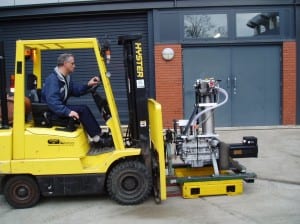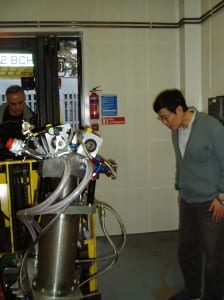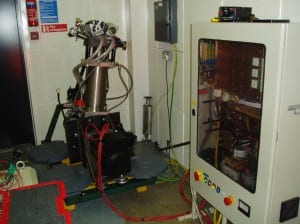
After delivery to the engine test cells at Loughborough University AAE dept., it took a significant amount of time to put together the control system instrumentation, and the control architectures necessary to run the engine under Labview, and DSpace.
This part of the story is the people behind developing this part of the project.
First up is Dr Ben Taylor, who at the time was one of my Post-Doctoral researchers at the University of Sheffield Department of Electronic and Electrical Engineering, and is currently a Research Fellow there in the Department of Automatic Control and Systems Engineering. Ben designed and built the 100kW four-quadrant power converter which in the early stages of the project drove the permanent magnet servo-motor attached to the end of the tethering crankshaft. This arrangement allowed us to make the initial development happen relatively safely, without the danger of losing control and blowing up the engine. Later developments are untethered from the crankshaft and truly ‘Free-Piston’

Ben also designed the control system for the servo-motor, based around a TI Digital Signal Processor (DSP) which allowed accurate, real-time control of the motor currents, and position/velocity control of the motor, interfaced to a DSpace real-time controller.
Ben subsequently moved on to work for myself and Prof Chris Bingham on a RDA funded project on intelligent heating controls and methods for domestic houses.
The power converter which Ben designed and built is now in use driving the linear electrical machine embedded in the engine, whilst the drive of the crankshaft servo-motor has been take over by a custom designed four-quadrant inverter designed and installed by Control Techniques





